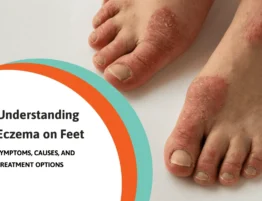
What you can learn and do to prevent diabetic foot amputation
Whenever you hear the word diabetes, you may have heard of someone you know of who has lost a foot or limb because of their diabetic state. In this blog, I will break down what you need to know into three basic categories. You will also learn about what you can do on a regular basis if you are diabetic to reduce the risk. The good news is even though the risk is still present, the overall risk of amputations has gone down in recent years because of medical advancements especially in wound care.
The three conditions that can cause an amputation in a diabetic person are:
- Foot deformities
- Arterial disease
- Neuropathy
Foot deformities are a major cause for concern
Any foot deformity that can lead to pressure on the skin, when shoe gear is worn, can put you at risk. Problems such as a bunion (also known as a deformity by the big toe joint) can create a prominence that can rub against a shoe. Another example would be a hammertoe, which could cause excessive rubbing against a shoe. When this happens, the skin may break down or a callus/corn may form which eventually leads to an opening in the skin.
If you also have diabetic neuropathy, you could lose your ability to sense or feel; this allows the problem to become more severe before you’re aware of it. So, what can be done?
- Wear shoes that fit well and don’t cause irritations on the skin
- Check your feet daily
- Be evaluated by a podiatrist for conservative, or, some situations surgical options
Arterial disease is riskier than you think
Peripheral artery disease or PAD can also make it riskier for an amputation. Diabetics tend to be more at risk of having peripheral artery disease and it tends to present lower in the leg and into the foot and ankle area rather than higher up the leg. It can become challenging for doctors to conduct procedures that can improve circulation in these smaller blood vessels when they become blocked. Obviously, without adequate blood flow to the foot, the potential for healing may be limited.
What can you do to help yourself in this situation
- Avoid smoking as this will increase the risk many fold.
- Have your circulation evaluated as it is important to be educated about the potential risk you may have.
- Regular exercise can help maintain good circulation.
- Avoid sugars and carbohydrates: Good diabetic control is the need of the hour, as this helps with the risk. Avoid anything that comes in a package (such as processed foods). These foods often are high in sugar and carbohydrates. Finally avoid all soft drinks or juice as many contain fructose.
Neuropathy is in fact, reversible
Diabetic neuropathy occurs in 50-70 percent of diabetics. For many, neuropathy is the most important consideration to take when risks such as diabetic ulcers and limb loss are attached. The symptoms that you will experience with neuropathy are: burning, tingling and numbness in the feet. It is the numbness and inability to feel that becomes quite problematic to daily life. The good news is that for many, the lack of sensation can be restored.
If you have heard that diabetic neuropathy is irreversible, it is simply not true!
Our award-winning research refutes this statement. More studies are also supporting the concept of nerve decompression surgery. In the diabetic state, a sugar molecule called Sorbitol is absorbed into your nerves and attracts water to the nerves, making them swell. This increase in size creates compression in areas where nerves pass through nerve tunnels. This then damages the nerves and creates neuropathy symptoms. Reducing compression can restore more normal nerve function.
To be more informed on this topic, you can refer to two research papers on our website, that show objectively that nerve function can be improved, and that this can ultimately lead to decreased amputation risk. Here are some more measures that you can take:
- Make sure you have good control of your diabetes.
- Be evaluated by a peripheral nerve surgeon – Potentially you could have your neuropathy reversed by surgical means.
- Visual inspection- Make it a habit to visually inspect your feet daily for problematic issues. Things you should be looking for include:
- Blisters
- Cracks
- Sores
- Redness
- Thick calluses
- Ingrown Nails
- Plantar warts
- Warm spots
Along with controlling your blood sugars, remember the three potential problem areas – foot deformities, arterial disease and neuropathy. If you would like to know more about what we can do to help with your foot and ankle concerns, or your neuropathy please reach out to us.
Listen to Mary’s testimonial where she talks about her recovery from surgery that involved reversing diabetic neuropathy.
Fort Collins
1355 Riverside Avenue,
Suite C, Fort Collins, CO 80524
(MAP)
(970) 329-8084
HOURS:
Mon – Thurs: 8:00 am – 5:00 pm
Fri: 8:00 am – 4:00 pm
Broomfield
3303 West 144th Ave #207
Broomfield, CO 80023
(MAP)
(303) 529-7185
HOURS:
Mon: 8:00 am – 5:00 pm
Wed: 8:00 am – 5:00 pm
Thurs: 8:00 am – 5:00 pm










Write a comment: